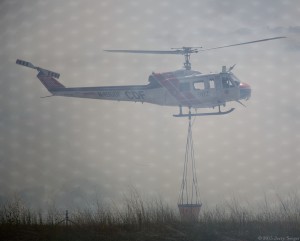Recently I wrote an episode about the lies that surround electric vehicles. First and foremost, that they are represented as zero emission vehicles, as if the electricity they use is magically produced with no cost. I proposed they be labeled “somewhere-else emissions” vehicles.
A comment on that episode, in which I had bandied a couple of numbers about willy-nilly, got me to thinking. So, what is this MPGe number anyway? Does it really compare to the MPG ratings of gasoline-powered cars? It’s complicated, but the answer is pretty resoundingly ‘no’. That’s the easy part; the real question is, how do the numbers actually compare?
Comparing the energy stored in a gallon of gasoline to the energy stored in a battery is tricky, but with effort you can come up with a rough equivalency. The EPA uses a conversion factor of 34.02 kWh per gallon. So if a car can go 110 miles using 34 kWh of electrical energy, it’s said to have an MPGe of 110. Simple enough so far.
But that’s not the whole story. According to the American Physical Society, roughly two-thirds of energy used to produce electricity is lost to various inefficiencies. So that 110 MPGe car is really a thirty-something car. Of course with different generation methods, like photovoltaic, it gets trickier to calculate (with PV it’s more about amortizing the energy spent to produce the cell over time). But let’s just go with the rough estimate: MPGe is off by a factor of three.
To be fair, then, we have to look at the energy cost of getting gasoline to the pump. Here’s something I didn’t know: In California, every gallon of gas requires (at least) 6 kWh of electricity just to pull it from the ground. If that electricity was generated from gasoline, and at the efficiency I mention above, that would be almost half a gallon of gas spent to extract that gallon of gas. And there’s natural gas used for extraction that’s not included in that number, and depending on who you ask, may be a much higher number. Then there’s refining, which is also energy-sucking. And transporting the fuel, which as far as I can tell is just a drop in the bucket.
Much of the electricity used to extract oil from the ground comes from coal, I read from a less-than-trustworthy site. If that’s true, then what we have is a system that burns coal to give you gasoline to burn in your car.
I wish I could give you a decent citation for the above, but the sites I read pointed to California 2006 numbers that are dead links now. It’s a pretty safe bet that extraction requires more electricity than it did a few years ago, however, since the oil reserves are becoming depleted and therefore more reluctant to give up their gooey goodness.
So many numbers flying around, and so many sources with obvious political axes to grind, it’s hard to get down to the bottom of it all. And THEN, just when you think you have the numbers lining up, you have to consider this: If the Middle East had no oil, we’d not be at war there. The World Trade Center would still be standing. We pay a lot — a shitload — for our oil, that’s not reflected in the price. Our children will pay an even bigger shitload dealing with the consequences of burning that oil, and for burning the fossil fuels to generate electricity. The numbers I’m throwing around here don’t reflect any of those costs.
What with all the this and that and whatnot, it looks like the true energy efficiency of a petroleum-powered vehicle is about one-sixth what the sticker on the window at the dealer says it is. My 27 MPG Mazda really consumes six times as much energy; its actual mileage is more like 4.5 MPG. Most of that cost is picked up by taxpayers, and that doesn’t even count the cost of getting the oil to our shores.
In Jerry’s Perfect Economy, the cost of a gallon of gas and the cost of a kWh of electricity would be the total cost, including the cost of extraction, protecting supply, and mitigating the ecological consequences of consumption. In Jerry’s Perfect Economy, there would be no need for environmental protection laws. Conservation would be its own reward.
It’s hard to imagine Jerry’s Perfect Economy without a massive bureaucracy. So maybe it’s not quite so perfect. Still, a guy can dream.
So, in the end, how do MPG and MPGe compare? Well, your car rated at 30 MPG really gets only six. Your car rated at 90 MPGe really gets only 30. Score one for the electrics.
Other citations: I refer you to this California Pamphlet because the very first word of regular copy is a grammatical error. I didn’t read the rest.
ADDENDUM: It never occurred to me to actually tell the state of California that they had the pamphlet wrong. My sweetie, guardian of the English language, found someone in the government to raise the issue with, and hours later, it was fixed! Crazy! Here’s a link to the new version. The link above still points to one that is incorrect.
Sharing improves humanity:









